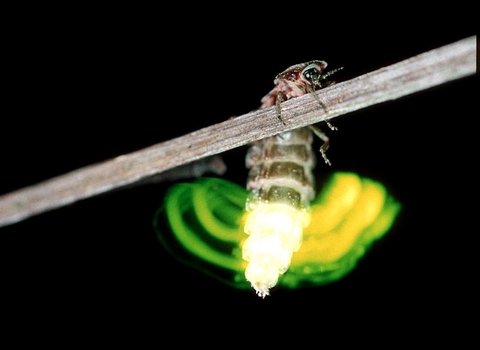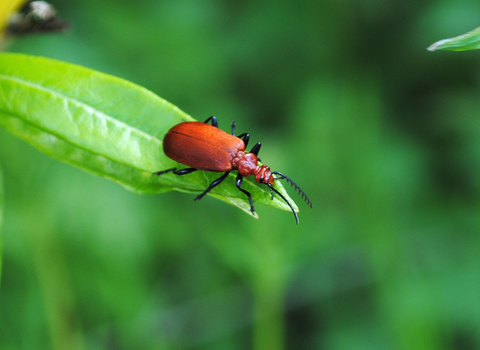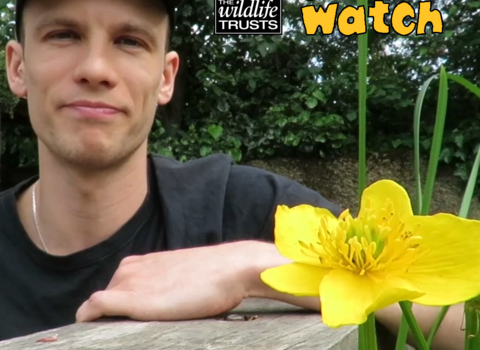Did you know there are over 4000 species of beetle in the UK? They range in size from a few millimetres to over 7cm long! They can be round, flattened or elongate and many are colourful, distinctly hairy or even iridescent – this means they shine different colours as you look at them from different angles. Some have warlike appendages such as horns and extended jaws, some have very long noses, and some have whip-like antennae.
Brilliant Beetles
What makes a beetle a beetle?
Most beetles can fly and their most obvious characteristic is that the delicate wings of beetles are protected by wing cases known as elytra. They have biting mouthparts, with sharp jaws. Some are predators of insects, others eat plants, fungi, or animal or plant remains. They live in dung, dead animals, on leaves, inside trees and dead wood, in the soil, and in water.
Just like butterflies, there are four stages in the life cycle of a beetle: egg, larva, pupa and adult. Beetle larvae hatch from eggs, then pupate and emerge as adult beetles. This process is called complete metamorphosis.
Beetles provide lots of benefits to us and other wildlife. Predatory ground beetles and ladybirds munch aphids and other insects that eat our crops. Dung beetles help to decompose dung from animals like cows and prevent grasslands becoming knee-deep in poop. Beetles also break down the bodies of dead animals, in some cases burying the body as a store of food for the next generation. Beetles can also help pollinate plants by carrying pollen from one flower to another.
Meet some UK beetles!
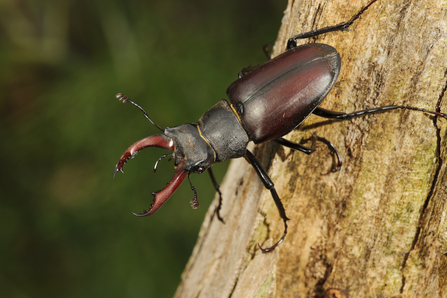
©Terry Whittaker/2020VISION
Stag beetle
Britain’s largest beetle! Males can reach 7cm long and have impressive jaws. They use these to fight other males when competing for the attention of female stag beetles. The larvae live in wood, especially old oaks in ancient forests in the south-east of England. They have been called thunder beetles, possibly because they often fly on warm summer nights when storms are more likely. This is quite a rare beetle but people are working hard to bring it back.
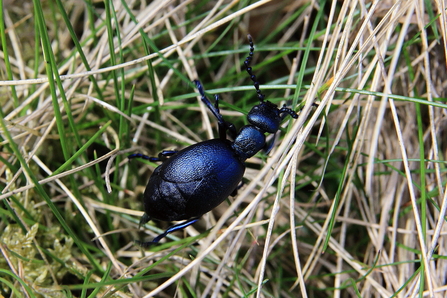
©Kieron Huston
Oil beetle
Inky blue-black oil beetles reach 2 ½ cm in length. They have a round head and a plump body that seems to be dressed in a puffer jacket. They can release an oily orange substance if threatened. Oil beetle larvae clamber up flowers and hitch a lift on a passing bee. Once safely inside the bee’s nest they feast on the pollen, honey and eat the bee’s own eggs! They can be found along the coasts, on downs and heaths.
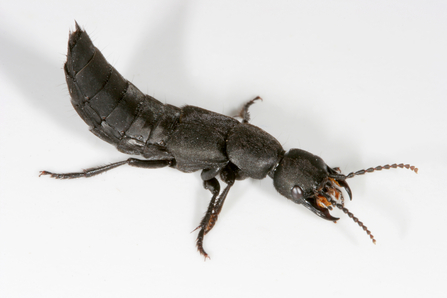
©Paul Richards
Devil’s coach horse
This fierce looking beast can be as long as your little finger. It is one of many beetles that can produce unpleasant chemicals. It is often under logs and stones and when threatened it will arch its back like a scorpion and exude a foul-smelling droplet.

©Iain R Macaulay
Timberman longhorn beetle
The Siberian Timberman is a longhorn beetle found in the wild pine forests of the north and in the high mountains of Europe and Asia, including in the highlands of Scotland. The body of the male can be 2cm and the antennae can be 3 or 4 times as long! Amazingly, both adults and larvae can survive freezing down to - 37°C.
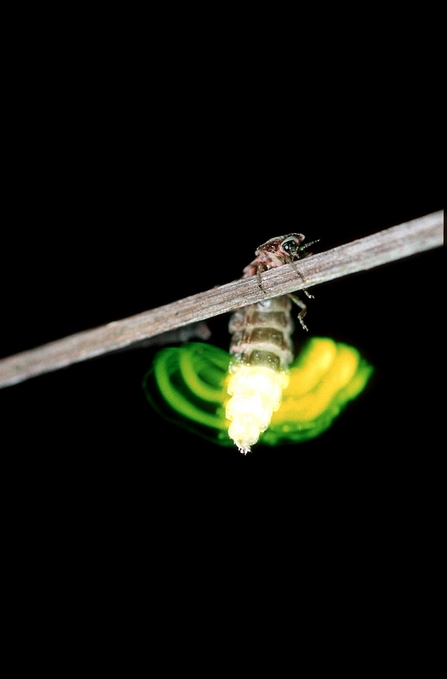
©John Tyler
Glow-worm
A wondrous summer sight is a scatter of golden-green twinkling lights amongst grass blades like tiny fallen stars. These lights are emitted at the tip of the female glow-worm’s larva-like body. She uses the light (created by a chemical reaction) to attract male beetles as they fly overhead. Glow-worms can be found on downs, heaths and waysides.
How can you help beetles?
Create a mini-meadow – in a sunny part of the garden establish a meadow with lots of different flowering plants. Let the plants grow until late summer so that beetles can feed on the plants and hunt amongst the grasses. In the autumn cut the meadow leaving a few ragged corners and about 2 to 3 inches of vegetation still standing (this helps insects to survive through the winter).
Build a beetle pile – stack dead leaves, plants, twigs and bits of rotting wood you find around the garden. This will attract many insects including beetles.
Dig a pond – even a small pond may attract water beetles, as many species will leave one pond and fly off in search of another (often at night).
Plant a tree – many beetles live on trees, so if you have space plant a native tree or shrub.
Keep it dark – avoid leaving bright lights on around the house or in the garden as this can affect the lifecycles of beetles and other nocturnal insects.
Get to know beetles – learn how to identify beetles and help record and monitor them.


